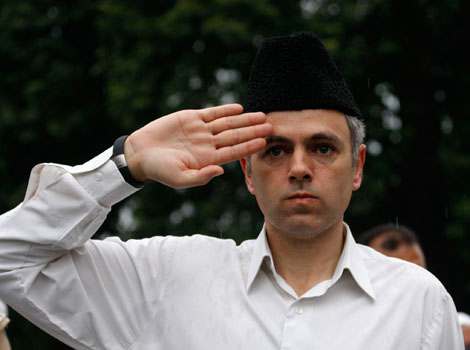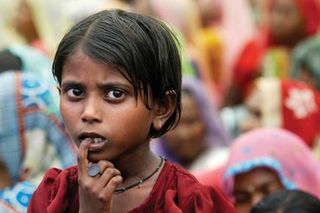GANDERBAL: Rolling out prestigious National Rural Livelihood Mission (NRLM) under the local name ‘Umeed’ to target rural poverty, Chief Minister Omar Abdullah Tuesday said poverty alleviation through a befitting mechanism has been a focused area during the last four years of his government.
At Lar, about 15 kilometres from capital Srinagar, Abdullah said the centrally sponsored NRLM was sanctioned for four blocks but by his persuasion at the Central Government level one block in each district is being sanctioned to be covered under the first phase of the programme.
He said during his visit to certain villages in Utter Pradesh, he witnessed positive impact of NRLM for upliftment of rural poor.
“People have important role in making the scheme viable and purposeful for alleviating poverty and improving economy of poor households,” he said.
The chief minister also highlighted the role of Mission Director of the scheme and said his approach and sincere work is key to see the scheme delivering and successful.
“The rural poverty in the state is not so severe as is witnessed in most other states in the country because of the facts that Baba-i-Qoum Sher-i-Kashmir Sheikh Mohammad Abdullah made farmers owners of agriculture land free of cost through the historic Land Reform Acts. Sheikh Sahib’s visionary approach to alleviate poverty paid satisfactory dividends.”
NRLM MODUS OPERANDI
NRLM is being rolled out with a phased implementation approach in the state of Jammu & Kashmir, saturating all the blocks in the next five years. NRLM will be implemented with defined scope of coverage. Lar, Khansahib, Basholi and Chenani are first four blocks in which NRLM is being launched at present.
To saturate all the blocks in the state, a two-pronged implementation approach namely; Intensive and Non-Intensive Approach will be adopted. Blocks under intensive approach will be manned with dedicated and sensitive staff for rolling out of mission. These blocks will demonstrate the “proof of concept” and act as immersion sites for learning by other non-intensive blocks.
These blocks will also be treated as resource sites to seed best practices in remaining blocks and expand NRLM in those blocks in a phased manner.
To ensure that at the end of two years, every district has at least one block developed under Intensive approach, 8 blocks (1 block in each district) would be covered under Intensive approach in the first year and 14 blocks in remaining 14 districts would be taken up in the second year. The total of 22 blocks to be undertaken in the first two years in all 22 districts of the state would be developed under Intensive Approach strategy.
The roll out in non-intensive blocks would be taken up six months after the start of intensive block strategy in those districts. However, the capacity building of the staff and other stakeholders of the remaining non-intensive blocks would start from the third month of starting resource block strategy, thus, the block coverage that would be achieved.
To ensure universal mobilisation, at least one member from each rural poor and vulnerable household, preferably a woman, has to be brought under the Self Help Group (SHG) net within the next five years.
Capacity Building/ Self-help groups
To start with, Resource Block Strategy would be undertaken in the identified blocks. Eight-resource blocks would be taken from the identified 22 intensive blocks within the first six months.
The work would start in the month of Feb 2013 for Jammu division and from March 2013, in Kashmir division.
To ensure capacity building on a continuous basis, eight training centres (one at every resource block) would be started to ensure social capital development in the first year. Trainers from the resource block from Society for Eradication of Poverty, Andhra Pradesh would anchor these training centres for a period of three years.
Every training block would be manned by at least two master trainers to impart continuous training. The endeavour would be that at the end of three years the community by itself would run these training centres and the community itself would churn out master community trainer among themselves. The mission would rest on the pillars of these trained trainers – the social capital.
The Self Help Groups of women shall be formed in each village. Each group shall have 10 to 14 members. Each group shall create its own capital through thrift. This capital can be used for internal lending till the group graduates for revolving fund and bank credit. The resources of the group shall be strengthened by providing subsidy and multiple credits subject to repayments.
The group shall take up various livelihood initiatives individually or collectively from the credit which shall flow from the Group. The group shall maintain its accounts and shall run the affairs of the group without any official interference. These Groups shall be federated at the Village and bloc levels. The federations aim at providing voice, space and bargaining power to the poor.










